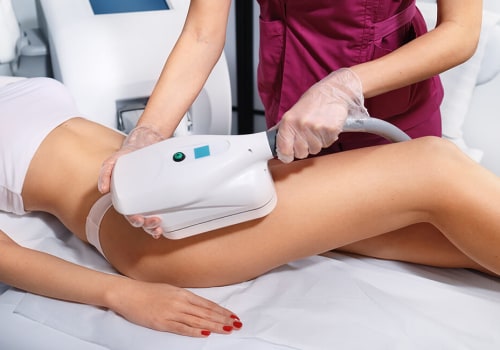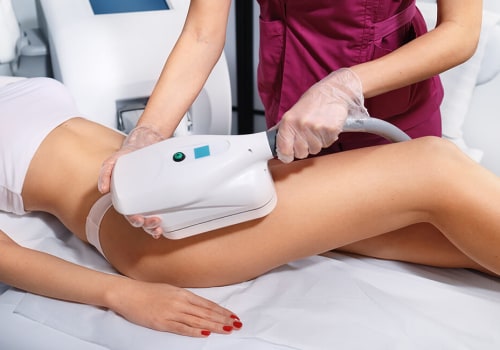Non-surgical fat reduction treatments, such as cryolipolysis (commonly known as CoolSculpting), laser therapy, and ultrasound fat reduction, have gained popularity as less invasive alternatives to traditional liposuction. These procedures promise to contour the body and reduce fat without the need for surgery, recovery time, or anesthesia. However, despite their appeal, non-surgical fat reduction treatments are not without risks. Individuals considering these options should be aware of potential side effects, complications, and long-term consequences before undergoing any procedure.
Side Effects and Immediate Reactions
Non-surgical fat reduction treatments can lead to a variety of side effects, some of which occur immediately after the procedure. Common side effects include redness, swelling, bruising, and pain at the treatment site. These symptoms are usually temporary and resolve within a few days or weeks. However, for some individuals, the discomfort can be more intense, requiring pain management. Procedures like cryolipolysis, which involve freezing fat cells, may cause prolonged numbness or tingling in the treated area, while laser and ultrasound treatments can lead to temporary skin irritation or burns if not performed correctly.
Rare but Serious Complications
While most non-surgical fat reduction treatments are generally safe, there are rare but serious complications that individuals should be aware of. One of the most concerning risks associated with cryolipolysis is paradoxical adipose hyperplasia (PAH). PAH is a condition in which fat cells in the treated area grow larger instead of shrinking, leading to an unexpected and sometimes disfiguring increase in fat volume. This complication is more common in men and is not easily reversed, often requiring surgical intervention to correct. Additionally, some patients may experience severe skin damage or nerve pain if the procedure is not administered by a skilled professional.
Variability in Treatment Effectiveness
Another risk of non-surgical fat reduction treatments is the variability in effectiveness. While these procedures can provide noticeable results for some individuals, others may see minimal changes or none at all. Factors such as the type of treatment, the skill of the practitioner, and the patient’s body composition can all influence the outcome. Inconsistent results may lead to dissatisfaction and the need for additional treatments, which can increase the overall cost and exposure to potential side effects. Moreover, patients with certain medical conditions or those who are significantly overweight may not achieve the desired results, as these treatments are often most effective for individuals who are already near their target weight but have localized fat deposits.
The Importance of Choosing a Qualified Practitioner
To minimize risks associated with non-surgical fat reduction treatments, it is crucial to choose a qualified and experienced practitioner. Unlike surgical procedures that require a high level of medical expertise, non-surgical treatments may be offered by providers with varying levels of training. This inconsistency can result in inexperienced individuals administering treatments, increasing the likelihood of complications. When seeking a provider, it is important to verify their credentials and inquire about their experience with the specific procedure. Clinics that offer a range of aesthetic services, such as Botox Chicago, often have trained professionals who are knowledgeable about various treatments, including non-surgical fat reduction. Choosing a reputable provider with a proven track record can significantly reduce the risk of adverse outcomes.
Post-Treatment Care and Monitoring
Proper post-treatment care is essential to reduce the risk of complications and optimize results. After non-surgical fat reduction procedures, patients are often advised to avoid strenuous activity for a few days and to follow specific aftercare instructions provided by their practitioner. Monitoring the treated area for any unusual changes, such as persistent pain, significant swelling, or skin abnormalities, is crucial. In some cases, patients may require follow-up appointments to assess progress and address any complications that arise. Failure to adhere to post-treatment guidelines can increase the likelihood of negative outcomes, including prolonged discomfort, skin damage, or suboptimal results.
Psychological and Emotional Risks
While physical risks are a primary concern, the psychological and emotional impact of non-surgical fat reduction treatments should not be overlooked. Patients who have high expectations for these procedures may feel disappointed if the results do not meet their desired aesthetic goals. This can lead to feelings of dissatisfaction, reduced self-esteem, and even regret. Additionally, individuals who experience complications, such as PAH, may face emotional distress due to the need for corrective surgery or the perceived worsening of their appearance. It is important for patients to have realistic expectations and to understand that while these treatments can be effective, they are not guaranteed to produce dramatic results.
The Financial Risks of Multiple Treatments
Non-surgical fat reduction treatments can be costly, and patients may underestimate the financial commitment involved. While a single session may be less expensive than surgical options like liposuction, achieving significant results often requires multiple treatments. The cumulative cost of these sessions can add up, particularly if the initial results are not satisfactory. Patients may find themselves returning for additional treatments in an attempt to achieve their desired outcome, increasing both their financial investment and their exposure to potential risks. Consulting with a knowledgeable provider who offers a clear and realistic treatment plan is essential to avoid unexpected costs and manage expectations.
Conclusion
While non-surgical fat reduction treatments offer an attractive alternative to more invasive procedures, they come with their own set of risks and limitations. Side effects, variability in effectiveness, and the potential for serious complications highlight the importance of making informed decisions and choosing a qualified provider. Clinics offering these treatments, often have experienced professionals who can help minimize risks and guide patients through the process safely. Understanding the potential downsides and preparing for realistic outcomes is crucial for anyone considering these procedures to ensure both physical and emotional well-being.








